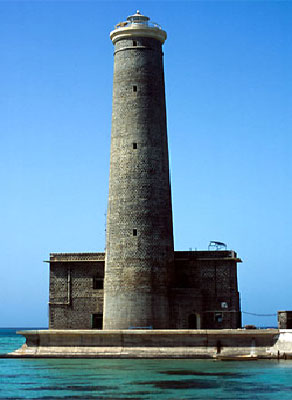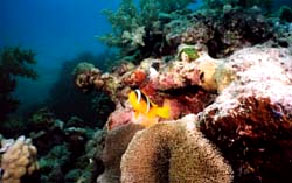Port Sudan is the capital of the country’s Red Sea state, one of 26 states that make up Sudan. It is the major seaport handling most of the trade of the country. The principal exports are live cattle and sheep, hides and skins, gum arabic, cotton, molasses and hibiscus.
Port Sudan has an oil refinery and an oil pipeline to Khartoum that was completed in 1977. The port was founded by the British in 1906 as the terminal for the rail line connecting the Red Sea to the Nile River. Today's city is badly in need of care and repair, although it is still possible to see beautiful lattice woodwork on the window-screens of older buildings, which provide a glimpse into the city's more prestigious past. An international airport is located in the city.
It is known among tourists for its excellent diving and beaches:
The Sudanese Red Sea coast extends for about 750 km. It is has high biological diversity and well-developed habitats. Mangroves are the main coastal vegetation and constitute a characteristic feature of the Sudanese Red Sea Coast. Seabirds constitute another key feature.
Two species of marine turtles are common in the Sudanese Red Sea - the Green Turtle, and the Hawksbill turtle. They are known to nest on islands of the Suakin Archipelago and Mukkawar Island on the north coast. Lighthouse at Sanganeb
Marine mammals are the Dugong, several species of whales especially the pilot whale and
several species of dolphins and several species of shark.
Sudan has one of the most beautiful coral reefs in the world. Three types of coral reefs are found here: the fringing reefs where continuous masses of growth of stony corals are found, the barrier reefs usually 5-10km offshore and Sanganeb atoll which has been declared a marine park of international heritage.
Most of the 450 common reef associated fish specie are found in the well developed coral communities.
The Sudanese Red Sea is one of the three major regions of the world which possess ornamental fishes of potential interest to the ornamental fish trade. The other two regions are the Caribbean and the Indo-Pacific. 17 families of the ornamental fishes have been identified.
Wild mother-of-pearl shells are found along the whole Sudanese shallow coastal water. These are collected by hand.The main collecting areas are Dongonab bay, Halayeb area, Suakin area and Shaab El Shubuk. The production has declined sharply lately in recent years.
Photo source: www.redseadives.com/





